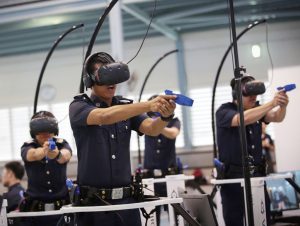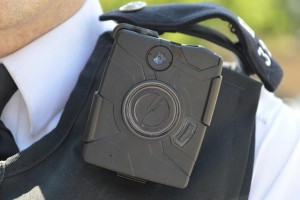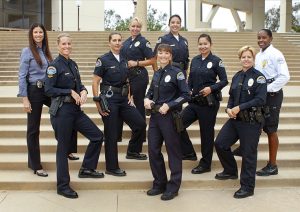 While it might seem (depending on which news service you follow) that the majority of Americans are not happy with the idea of proactive policing, a survey completed in the summer of 2018 by the National Police Association offered some surprising results. In fact, the numbers show that the majority of the public supports the idea of proactive policing because it has been proven to reduce the number of victims and the number of people committing crimes.
While it might seem (depending on which news service you follow) that the majority of Americans are not happy with the idea of proactive policing, a survey completed in the summer of 2018 by the National Police Association offered some surprising results. In fact, the numbers show that the majority of the public supports the idea of proactive policing because it has been proven to reduce the number of victims and the number of people committing crimes.
What the Survey Showed
One of the items those who participated in the survey stated, was that they believe that all the negative publicity and media attacks on law enforcement agencies and their officers has had a negative impact. The problem is that many officers have become reluctant to step in and stop crimes like murders and robberies before they occur.
The survey also found that many officers are now afraid to perform tasks such as wrestling a suspect to the ground, stopping them by using their nightstick, of the use of any other type of force to stop a crime for fear of being sued. Worse yet, they fear being charged with “police brutality,” which can carry heavy penalties such as fines, loss of job, and imprisonment. Most of those surveyed stated they support the rights of law enforcement officers to use reasonable force to halt a crime in progress, apprehend as suspect, or to defend themselves in the event they are subjected to a physical attack.
It should come as no surprise that over 90% of those who responded to the survey completely reject the ridiculous demands by a number of the most radical “anti-police” groups that police officers no longer be allowed to carry guns.
More Important Findings from the Survey
Most of those surveyed believe that law enforcement officers should be permitted to work with immigration agents to help deport dangerous illegal and legal immigrants. Something that does not always happen, resulting in a much higher level of crimes being committed in this county by illegal aliens.
More than 80% of those surveyed say they do not agree with the many politicians in Washington D.C. who would give murderers, rapists, and burglars who have been convicted the right to vote. Instead, they categorically oppose the idea that convicted criminals be given the right to vote. This right has been taken from every convicted felon for decades.
Many say that schools should be responsible for teaching their students to respect police officers and how to behave in the event they are stopped by a police officer for any reason. They also stated that they would prefer to see a larger police presence in their neighborhood with the ability to stop and question suspicious people rather than having to wait until a crime has actually been committed before stepping in.

 Social media has become a significant part of just about everyone’s life. People post an incredible amount of personal information including pictures of themselves and their families with abandon. It’s incredible how much information is out there floating around the web. While this might be okay for the average citizen, when it comes to being a police officer, you just can’t afford to be this casual with your personal information or that of your family. Keep in mind that no one is trying to tell you not to have social media accounts, what we are trying to say to you is that you need to be very careful what you post.
Social media has become a significant part of just about everyone’s life. People post an incredible amount of personal information including pictures of themselves and their families with abandon. It’s incredible how much information is out there floating around the web. While this might be okay for the average citizen, when it comes to being a police officer, you just can’t afford to be this casual with your personal information or that of your family. Keep in mind that no one is trying to tell you not to have social media accounts, what we are trying to say to you is that you need to be very careful what you post. As any law enforcement officer can tell you, there are times when you need more evidence in order to gain a conviction. Last year in Anne Arundel County Maryland, the police department was working on a murder case in Baltimore with very little to go, a body had not been found, and despite their suspicions there was insufficient evidence to prove that Shaquana Marie Caldwell had even been murdered let alone that Taras Caldwell was the perpetrator.
As any law enforcement officer can tell you, there are times when you need more evidence in order to gain a conviction. Last year in Anne Arundel County Maryland, the police department was working on a murder case in Baltimore with very little to go, a body had not been found, and despite their suspicions there was insufficient evidence to prove that Shaquana Marie Caldwell had even been murdered let alone that Taras Caldwell was the perpetrator. NextGen 911 in the US was designed to allow for people to contact 911 agents via text as well as by phone, which for the past 40 plus years has been the only way to access them. But like most forms of technology, NextGen 911 continues to evolve at an incredible rate. In Canada, 911 dispatchers, law enforcement, fire, and EMS are all eagerly anticipating the next stage in NextGen 911 development.
NextGen 911 in the US was designed to allow for people to contact 911 agents via text as well as by phone, which for the past 40 plus years has been the only way to access them. But like most forms of technology, NextGen 911 continues to evolve at an incredible rate. In Canada, 911 dispatchers, law enforcement, fire, and EMS are all eagerly anticipating the next stage in NextGen 911 development. Police officers today face the problem of learning how to manage the private lives on social media given the fact they work in the public sector. It can be exceptionally hard for law enforcement officers to keep their private lives private. There are so many different ways in which the information an officer might post on his social media site that can affect his security and that of his family as well as his fellow officers.
Police officers today face the problem of learning how to manage the private lives on social media given the fact they work in the public sector. It can be exceptionally hard for law enforcement officers to keep their private lives private. There are so many different ways in which the information an officer might post on his social media site that can affect his security and that of his family as well as his fellow officers. In recent years virtual reality has gone from the science fiction to science fact and as a form of entertainment has become extremely popular seemingly almost overnight. While VR has very definite entertainment value, police training academies and departments around the world are starting to see its value both as a training tool and more recently as a way to reach out and connect with the residents in their communities.
In recent years virtual reality has gone from the science fiction to science fact and as a form of entertainment has become extremely popular seemingly almost overnight. While VR has very definite entertainment value, police training academies and departments around the world are starting to see its value both as a training tool and more recently as a way to reach out and connect with the residents in their communities. With the use of narcotics steadily on the rise in the U.S., more law enforcement agencies are starting to use handheld narcotics analyzers. The simple to use yet highly sophisticated devices can help speed up the legal process, while at the same time helping departments to significantly reduce the cost of testing.
With the use of narcotics steadily on the rise in the U.S., more law enforcement agencies are starting to use handheld narcotics analyzers. The simple to use yet highly sophisticated devices can help speed up the legal process, while at the same time helping departments to significantly reduce the cost of testing. According to the latest reports issued by the Officer Down Memorial Page (ODMP), in 2016 ten officers were killed by being struck and killed by another vehicle while working on the side of the road. The number dropped to only four in 2017, but so far this year the numbers are looking pretty grim.
According to the latest reports issued by the Officer Down Memorial Page (ODMP), in 2016 ten officers were killed by being struck and killed by another vehicle while working on the side of the road. The number dropped to only four in 2017, but so far this year the numbers are looking pretty grim. It is well-known that although Payton Manning may not have been one of the most athletic quarterbacks to grace the NFL, he was most certainly one of the best-prepared. Manning spent inordinate amounts of time studying films of his opponents; he claims to have a “Rain Man-like” memory for plays that might have occurred many years ago. He used this information to structure his plays and become one of the most successful quarterbacks in modern NFL history.
It is well-known that although Payton Manning may not have been one of the most athletic quarterbacks to grace the NFL, he was most certainly one of the best-prepared. Manning spent inordinate amounts of time studying films of his opponents; he claims to have a “Rain Man-like” memory for plays that might have occurred many years ago. He used this information to structure his plays and become one of the most successful quarterbacks in modern NFL history. While women do account for a small but growing segment of law enforcement across the country, the number still only sits at approximately 11.6 %. This is an increase of only 8% since the 1970s. The good news for women is that the need to hire more women into law enforcement has started to receive a significant amount of coverage. There are a number of benefits to significantly increasing the number of women behind the badge.
While women do account for a small but growing segment of law enforcement across the country, the number still only sits at approximately 11.6 %. This is an increase of only 8% since the 1970s. The good news for women is that the need to hire more women into law enforcement has started to receive a significant amount of coverage. There are a number of benefits to significantly increasing the number of women behind the badge.